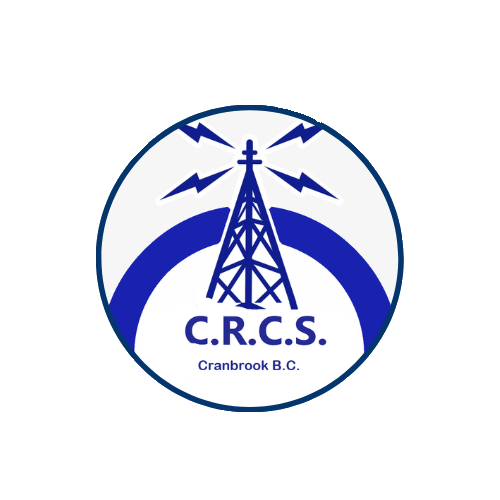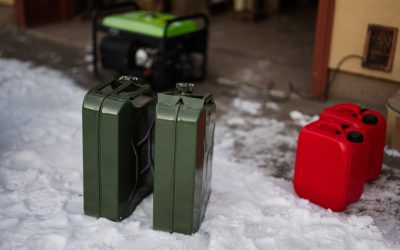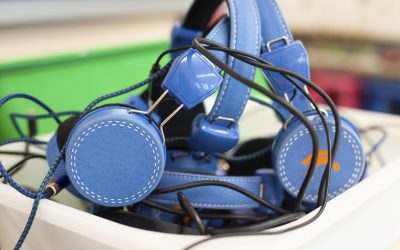When autumn rolls around, most hams are busy tuning antennas, testing equipment, and finishing last-minute projects before the cold sets in. But there’s one piece of fall prep that often gets overlooked—weatherproofing your coax. Whether you operate HF, VHF, or UHF, your coaxial cable is the lifeline between your rig and your antenna. A little water or ice intrusion can turn a clear signal into a noisy mess.
At the Cranbrook Radio Club Society (CRCS), we know how fast the seasons change in Canada. By the time the first snow hits, it’s too late to scramble outside with tape and tools. That’s why fall prep should always include a close look at your coax, connectors, and weatherproofing strategy. In this guide, we’ll walk through everything you need to know to protect your coax before winter arrives.
Why Weatherproofing Coax Matters
Your coaxial cable isn’t just a wire—it’s a shielded transmission line designed to carry RF efficiently. When water seeps into the braid or connectors:
-
Signal Loss Increases: Even small amounts of moisture can raise the loss, especially at higher frequencies.
-
Corrosion Starts: Water mixed with oxygen equals rust or oxidation on connectors.
-
Impedance Changes: Moisture alters the dielectric properties of the cable, leading to mismatches and poor SWR.
-
Winter Damage: Frozen water expands, cracking jackets, splitting connectors, and causing long-term failure.
Think of coax as your station’s artery. A little preventative care each fall means fewer headaches in January when the snow is three feet deep.
Step 1: Inspect Before You Protect
Fall prep starts with inspection. Take a day to go outside, climb the ladder if needed, and walk the full run of coax from shack to antenna. Things to look for:
-
Cracked or brittle jackets (common in older cable exposed to sun).
-
Discolored spots (UV damage or early corrosion).
-
Loose connectors (a prime entry point for moisture).
-
Previous tape or sealant that’s worn out or peeling.
If the cable shows severe wear, no amount of weatherproofing will save it. In that case, replace the section before sealing things up.
Step 2: Choose the Right Weatherproofing Materials
There’s no one-size-fits-all approach. Different hams swear by different methods, but the key is layering. Here are common options:
1. Coax Seal (Butyl Rubber)
-
Flexible, moldable putty that never hardens.
-
Creates an airtight and watertight seal.
-
Great as a base layer around connectors.
2. Self-Amalgamating Tape
-
Rubber tape that bonds to itself when stretched.
-
Extremely resistant to UV and weather.
-
Ideal for outer wrapping after coax seal.
3. Electrical Tape
-
Not weatherproof on its own.
-
Can be used as an outer layer to protect self-amalgamating tape from sunlight.
4. Heat Shrink Tubing
-
Provides a professional finish when applied over connectors.
-
Requires heat gun application, so not always practical up the tower.
Pro Tip from CRCS: Avoid relying solely on electrical tape. It dries, cracks, and lets water in. Always pair it with coax seal or self-amalgamating tape.
Step 3: Sealing the Connections
Weatherproofing is most critical where connectors join. Here’s a step-by-step method used by many experienced operators:
-
Dry Everything First – Never seal moisture inside.
-
Wrap with Coax Seal – Mold it tightly around the connector and up the coax jacket.
-
Layer Self-Amalgamating Tape – Stretch it to activate bonding and overlap by half the width.
-
Optional Outer Layer – Add a layer of electrical tape to protect from UV and abrasion.
This creates a triple barrier: airtight, watertight, and UV resistant.
Step 4: Support and Drainage
Even with perfect sealing, gravity and water can work against you. Make sure your coax run includes:
-
Drip Loops – Let water run off instead of pooling at connectors.
-
Strain Relief – Use proper supports so the cable isn’t pulling down on connectors.
-
Vertical Mounting Considerations – Always point PL-259 or N-type connectors downward if possible.
Step 5: Protecting Coax Runs
Don’t forget the coax itself! Beyond connectors, the length of cable needs attention too.
-
UV Protection: Sunlight breaks down PVC jackets. Black electrical tape or UV-rated split loom tubing helps.
-
Rodent Protection: In some rural areas, critters chew coax. Use conduit where possible.
-
Buried Coax: If coax runs underground, use direct-bury rated cable and seal entry points thoroughly.
Step 6: Shack Entry Points
Your shack’s entry panel is another vulnerable area. For fall prep:
-
Seal around coax feed-throughs with silicone or weatherproof boots.
-
Add drip loops just before the entry point.
-
Check ground connections while you’re there—corroded clamps won’t protect you in a surge.
Step 7: Testing After Weatherproofing
Once everything is sealed, take baseline readings before winter sets in:
-
SWR across bands – Compare to previous readings.
-
Signal reports from local nets – Ask for feedback on clarity and strength.
-
Visual inspection – Note exactly how your sealing looks now.
This gives you a benchmark. If performance degrades in mid-winter, you’ll know something went wrong.
Common Mistakes to Avoid
Even experienced hams slip up when it comes to coax fall prep. Watch out for these:
-
Sealing wet connectors – traps moisture inside.
-
Over-tight electrical tape – cuts into coax jacket.
-
Skipping drip loops – invites water to flow into the shack.
-
Mixing metals without proper prep – aluminum and copper corrosion accelerates with moisture.
Fall Prep Checklist for Your Coax
Here’s a CRCS quick-reference checklist you can print and keep in the shack:
-
Inspect all coax runs for cracks or damage
-
Check all connectors for tightness and corrosion
-
Replace worn sections before sealing
-
Apply coax seal around connectors
-
Wrap with self-amalgamating tape
-
Add protective outer layer (optional)
-
Install drip loops at every connector
-
Secure coax with supports and strain relief
-
Protect long runs from UV and critters
-
Seal shack entry points thoroughly
-
Record SWR and signal performance for baseline
Why Fall Prep Saves Money and Time
Hams often think of weatherproofing as “extra work,” but it’s actually a cost saver. Consider this:
-
New coax runs aren’t cheap—especially low-loss HF/VHF cable.
-
Connector replacements are time-consuming, especially in freezing conditions.
-
Signal loss robs you of effective contacts, contests, and net check-ins.
-
Safety matters—wet coax can create arcing issues if power levels are high.
A few hours of fall prep can extend the life of your coax by years.
Test Before the Snow
Several of our club members run a “fall net” test session each October. Everyone checks into the net, compares signal strength from summer to fall, and logs changes. It’s a fun way to spot early issues before winter locks us in. We encourage all clubs to do something similar—it builds community while keeping everyone’s gear in top shape.
Fall prep isn’t just about raking leaves and pulling out snow shovels. For amateur radio operators, it’s about protecting the most vulnerable part of the station—the coax. By inspecting, sealing, supporting, and testing your coax before the snow flies, you’ll avoid static-filled QSOs and expensive repairs in January.
As we like to say at CRCS: “If your coax survives the Canadian winter, it’s because you gave it a fighting chance in the fall.”
So grab your ladder, coax seal, and tape this weekend. Your future self will thank you when you’re enjoying crisp, clear QSOs by the fire while the snow piles up outside.




